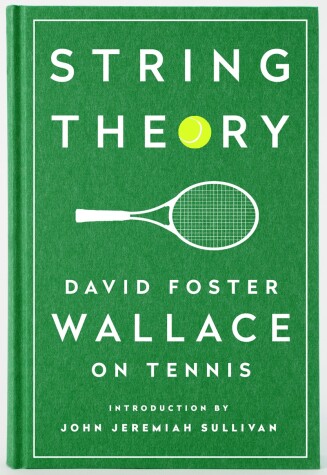Un minuto de silencio por ese libro ilusionado que era el siguiente en la pila y que se ve reemplazado por uno recién comprado. Otra vez.
— Mario (@mario_jsg) 6 de noviembre de 2017
El libro es una unión de cinco ensayos con el tenis como tema común. Desde la infancia/adolescencia del autor como cuasicampeón regional en el medio oeste hasta sus visitas al Open de Canadá y el US Open como periodista acreditado, pasando por la crítica literaria de las memorias deportivas de una campeona de tenis, el autor habla y habla y habla de tenis (y de muchas otras cosas) sin que nunca nos cansemos de escucharle. Es fantástico. Tiene además tanto que decir que es frecuente que meta cincuenta notas al pie por ensayo, en las que hace graciosísimas acotaciones que por algún motivo no considera dignas del texto principal.
Me ha parecido un libro de altísimo nivel que se leía con la misma fruición que una novelita del oeste. Lo mejor de ambos mundos.
Algunas de sus mejores frases son hiperboles humorísticas:
Now a huge roar that makes the whole Stadium’s superstructure wobble signifies that the forces of democracy and human freedom have won the third set.
Otras son frases dichas al comienzo de un ensayo que te hacen saber que el ensayo va a ser bueno:
There are three kinds of valid explanation for Federer’s ascendancy. One kind involves mystery and metaphysics and is, I think, closest to the real truth. The others are more technical and make for better journalism.
Otras frases, soltadas al desgaire, revelan una profunda vida interior:
It’s about 1900h., that time when the sun hasn’t gone down yet but everything seems to be in something else’s shadow.
Sampras, who is not exactly a moonballer, seems almost frail, cerebral, a poet, both wise and sad, tired the way only democracies get tired [...]
Eso y sus descripciones en plan bombardeo de saturación han hecho que caiga rendido ante él. Tengo un nuevo héroe.
The sharply precise divisions and boundaries, together with the fact that—wind and your more exotic-type spins aside—balls can be made to travel in straight lines only, make textbook tennis plane geometry. It is billiards with balls that won’t hold still. It is chess on the run. It is to artillery and airstrikes what football is to infantry and attrition.
